 On June 7, 2024, the United Nations proclaimed 2025 as the International Year of Quantum Science and Technology (IYQ). According to the proclamation, this year-long, worldwide initiative will "be observed through activities at all levels aimed at increasing public awareness of the importance of quantum science and applications." The year 2025 was chosen for this International Year as it recognizes 100 years since the initial development of quantum mechanics. Join us in engaging with quantum science and technology education and celebration throughout 2025!
On June 7, 2024, the United Nations proclaimed 2025 as the International Year of Quantum Science and Technology (IYQ). According to the proclamation, this year-long, worldwide initiative will "be observed through activities at all levels aimed at increasing public awareness of the importance of quantum science and applications." The year 2025 was chosen for this International Year as it recognizes 100 years since the initial development of quantum mechanics. Join us in engaging with quantum science and technology education and celebration throughout 2025!
 If you’ve ever made the mistake of putting certain fresh fruits or vegetables in the freezer, then you’re already familiar with the effects of freezing on biological tissue. Banana skins turn black and slimy. Whole oranges leak and deflate. Lettuce comes out limp and soggy. The cause of all this spoilage? Ice crystallization.
If you’ve ever made the mistake of putting certain fresh fruits or vegetables in the freezer, then you’re already familiar with the effects of freezing on biological tissue. Banana skins turn black and slimy. Whole oranges leak and deflate. Lettuce comes out limp and soggy. The cause of all this spoilage? Ice crystallization.
Read More
 If you're an avid follower of High-Luminosity LHC (HL-LHC) news, you will no doubt already have heard about "the python", the new superconducting link developed at CERN. It is a component of the new cold powering system that will power the HL-LHC inner triplet magnets, which will focus proton beams more tightly around the ATLAS and CMS collision points.
If you're an avid follower of High-Luminosity LHC (HL-LHC) news, you will no doubt already have heard about "the python", the new superconducting link developed at CERN. It is a component of the new cold powering system that will power the HL-LHC inner triplet magnets, which will focus proton beams more tightly around the ATLAS and CMS collision points.
Read More
 In a recent article published in Nature, researchers developed a 300-mm cryogenic probing process to obtain high-volume data on spin qubit devices across full wafers. They optimized an industry-compatible process to fabricate spin qubit devices on a low-disorder host material, enabling automated probing of single electrons in spin qubit arrays across 300-mm wafers.
In a recent article published in Nature, researchers developed a 300-mm cryogenic probing process to obtain high-volume data on spin qubit devices across full wafers. They optimized an industry-compatible process to fabricate spin qubit devices on a low-disorder host material, enabling automated probing of single electrons in spin qubit arrays across 300-mm wafers.
Read More
New Guide Published: "Select Thermal Properties for Cryogenic Insulation Materials"
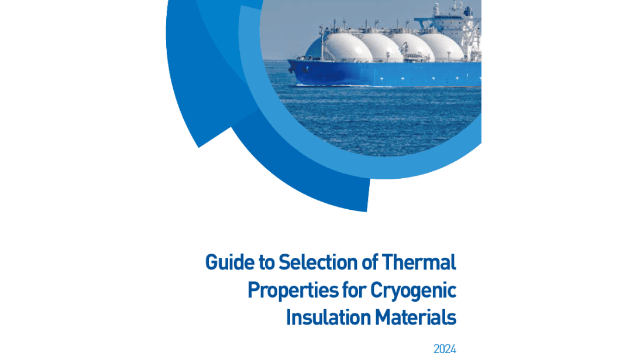 Korean Register has published the "Guide to Selection of Thermal Properties of Cryogenic Insulation Materials" for safe storage of cryogenic fuels, including LNG and liquid hydrogen. Last year, the International Maritime Organization (IMO) adopted the '2023 Greenhouse Gas Strategy' with the goal of achieving carbon neutrality in international shipping by 2050. The strategy aims to reduce greenhouse gas emissions by at least 20%, striving for 30%, by 2030, at least 70%, striving for 80%, by 2040, and to achieve net-zero emissions by around 2050.
Korean Register has published the "Guide to Selection of Thermal Properties of Cryogenic Insulation Materials" for safe storage of cryogenic fuels, including LNG and liquid hydrogen. Last year, the International Maritime Organization (IMO) adopted the '2023 Greenhouse Gas Strategy' with the goal of achieving carbon neutrality in international shipping by 2050. The strategy aims to reduce greenhouse gas emissions by at least 20%, striving for 30%, by 2030, at least 70%, striving for 80%, by 2040, and to achieve net-zero emissions by around 2050.
Read More
 It was a scorcher last year. Land and sea temperatures were up to 0.2 °C higher every single month in the second half of 2023, with these warm anomalies continuing into 2024. We know the world is warming, but the sudden heat spike had not been predicted. As NASA climate scientist Gavin Schmidt wrote in Nature recently: “It’s humbling and a bit worrying to admit that no year has confounded climate scientists’ predictive capabilities more than 2023 has.”
It was a scorcher last year. Land and sea temperatures were up to 0.2 °C higher every single month in the second half of 2023, with these warm anomalies continuing into 2024. We know the world is warming, but the sudden heat spike had not been predicted. As NASA climate scientist Gavin Schmidt wrote in Nature recently: “It’s humbling and a bit worrying to admit that no year has confounded climate scientists’ predictive capabilities more than 2023 has.”
Read More
Cryogenics in Zero Gravity
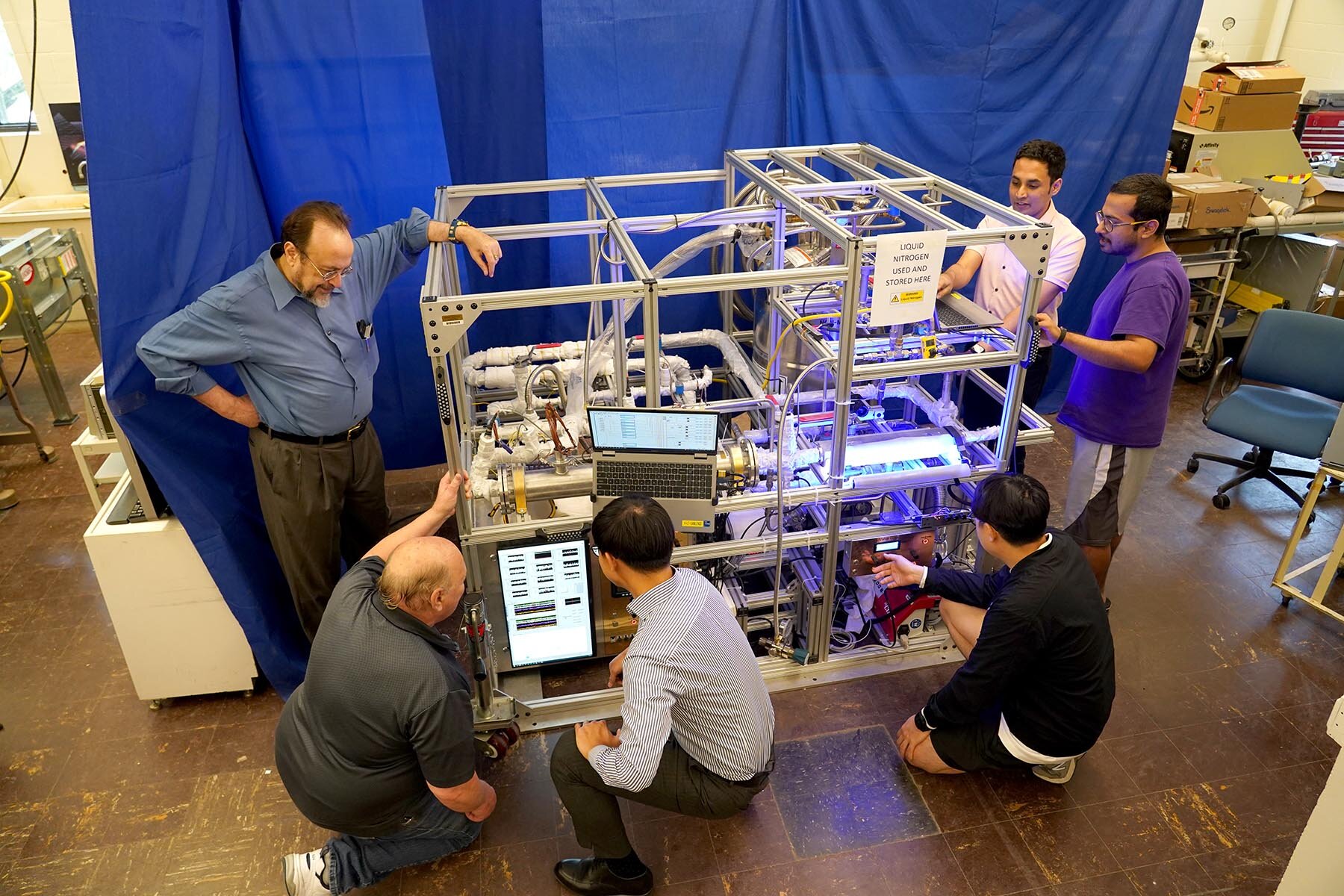 As we plan for future interplanetary spaceflight, one major aspect remains untested: refueling in space. That's because most rocket propellants are cryogenic liquids whose long-term behavior in space is still unknown. Purdue University researchers are collaborating with NASA to study cryogenic liquids in zero gravity, leading to the possibility of propellant depots and refueling spacecraft in orbit.
As we plan for future interplanetary spaceflight, one major aspect remains untested: refueling in space. That's because most rocket propellants are cryogenic liquids whose long-term behavior in space is still unknown. Purdue University researchers are collaborating with NASA to study cryogenic liquids in zero gravity, leading to the possibility of propellant depots and refueling spacecraft in orbit.
Read More
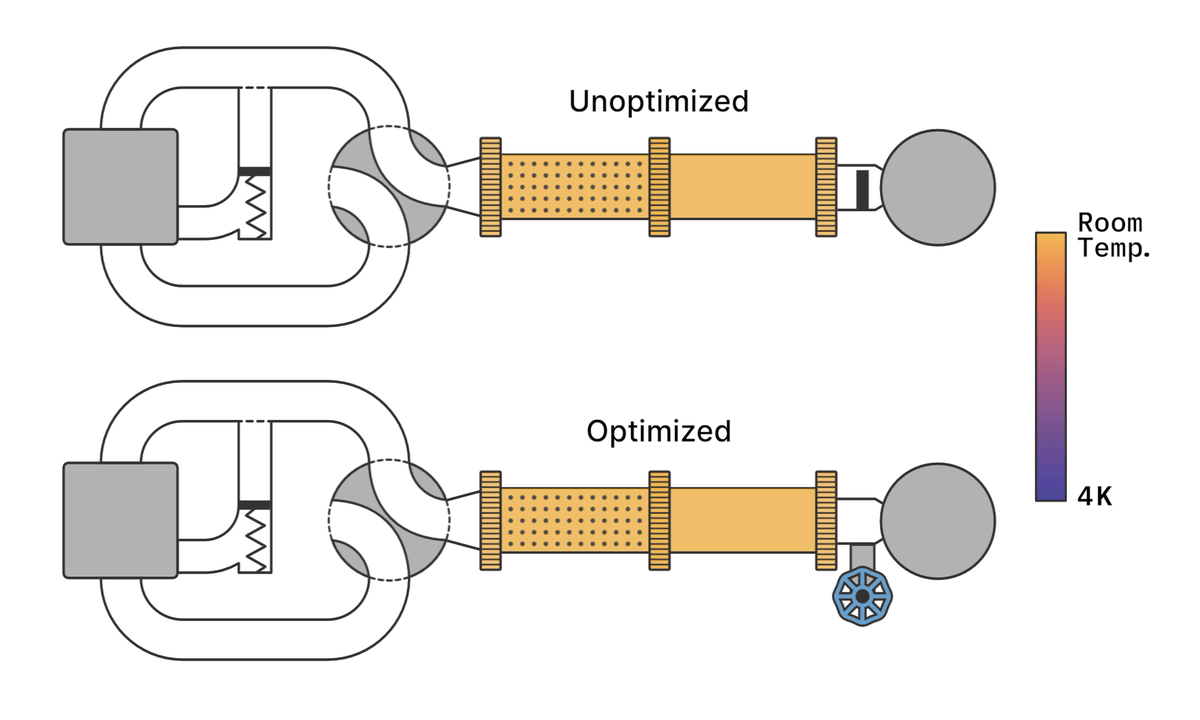 A simple modification to a popular type of cryogenic cooler could save $30 million in global electricity consumption and enough cooling water to fill 5000 Olympic swimming pools. That is the claim of researchers at the National Institute of Standards and Technology (NIST) and the University of Colorado Boulder who describe their energy-efficient design in Nature Communications.
A simple modification to a popular type of cryogenic cooler could save $30 million in global electricity consumption and enough cooling water to fill 5000 Olympic swimming pools. That is the claim of researchers at the National Institute of Standards and Technology (NIST) and the University of Colorado Boulder who describe their energy-efficient design in Nature Communications.
Read More
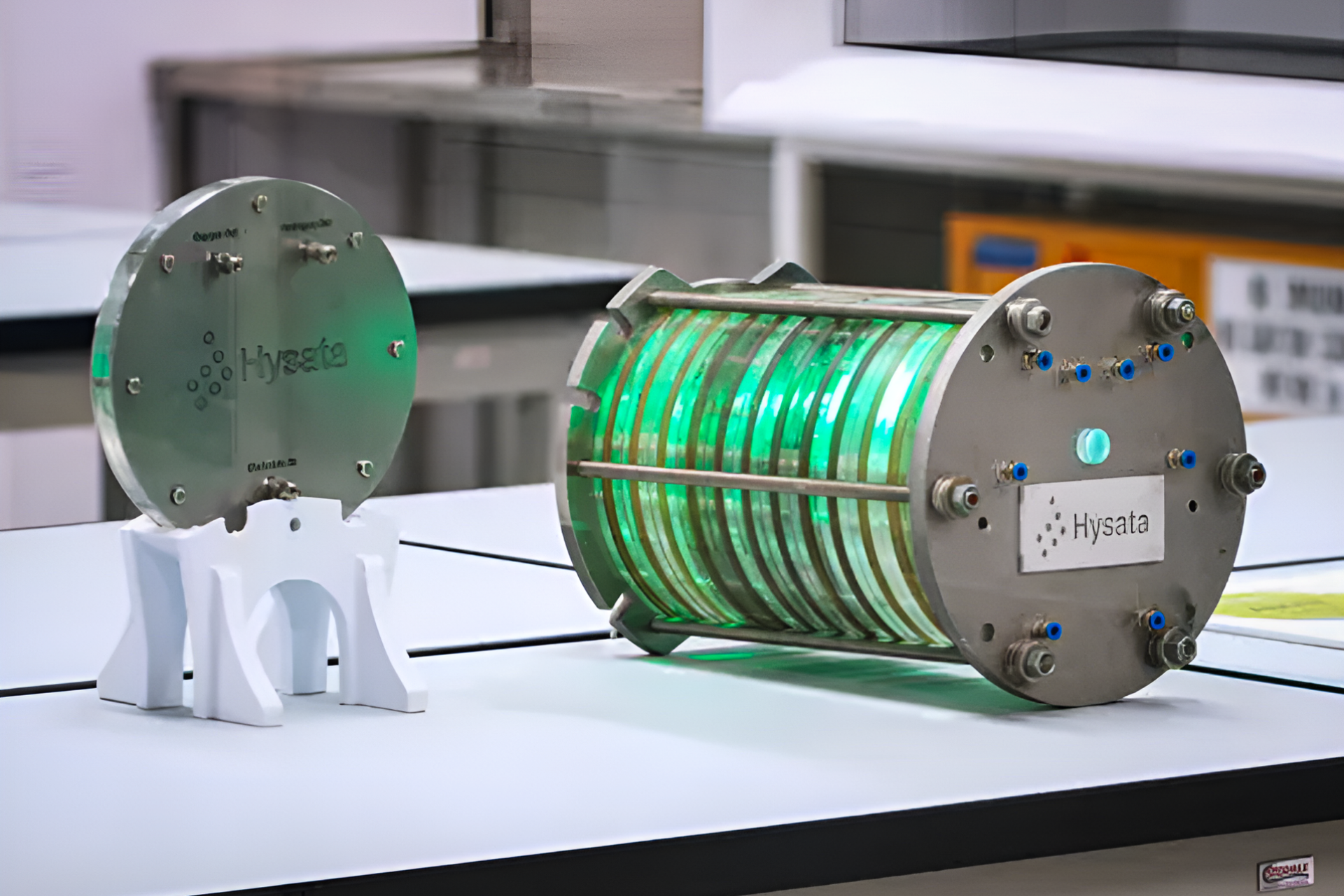 Hysata promises the world's cheapest hydrogen, thanks to a remarkable device that splits water into H2 and O2 at 95% efficiency – some 20% higher than the best conventional electrolyzers. The company has raised US$111 million to scale up production.
Hysata promises the world's cheapest hydrogen, thanks to a remarkable device that splits water into H2 and O2 at 95% efficiency – some 20% higher than the best conventional electrolyzers. The company has raised US$111 million to scale up production.
You have to throw some energy away to make hydrogen – typically around 20-30%, even with the best systems, which use around 52.5 kWh of energy to create a kilogram of hydrogen that can store 39.4 kWh of energy. It's a waste of renewable energy, and it contributes to the high cost of a green fuel option that's really struggling to compete against fossils and batteries in many applications.
Read More
Under Pressure: Harvard Scientists Break Through Precise Measurement with New Tool
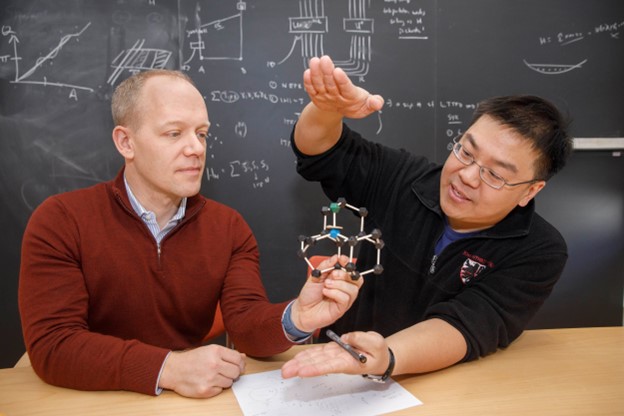 Hydrogen (like many of us) acts weird under pressure. Theory predicts that when crushed by the weight of more than a million times Earth’s atmosphere, this light, abundant, normally gaseous element first becomes a metal and then, even more strangely, a superconductor – a material that conducts electricity with no resistance. Scientists have been eager to understand and eventually harness superconducting hydrogen-rich compounds, called hydrides, for practical applications ranging from levitating trains to electric grids that transmit power with perfect efficiency to new types of electronics and memory devices. But studying the behavior of these and other materials under enormous, sustained pressure is anything but practical, and accurately measuring those behaviors ranges somewhere between a nightmare and impossible.
Hydrogen (like many of us) acts weird under pressure. Theory predicts that when crushed by the weight of more than a million times Earth’s atmosphere, this light, abundant, normally gaseous element first becomes a metal and then, even more strangely, a superconductor – a material that conducts electricity with no resistance. Scientists have been eager to understand and eventually harness superconducting hydrogen-rich compounds, called hydrides, for practical applications ranging from levitating trains to electric grids that transmit power with perfect efficiency to new types of electronics and memory devices. But studying the behavior of these and other materials under enormous, sustained pressure is anything but practical, and accurately measuring those behaviors ranges somewhere between a nightmare and impossible.
Read More
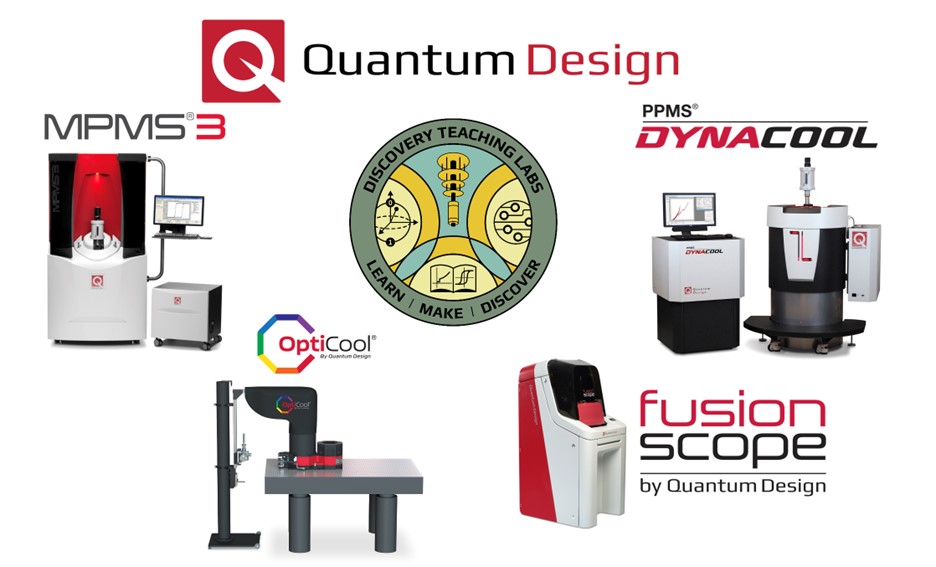 Since 1982, Quantum Design has been providing lab-ready scientific instruments to colleges, universities, government and corporate laboratories around the world. Instruments include the DynaCool® Physical Property Measurement System (PPMS), the MPMS3® SQUID Magnetometer and VersaLab® Physics Education System. The OptiCool® is a large volume, low vibration, low temperature and high magnetic field cryogen-free environment for magneto-optical investigations. The FusionScope® is a correlative microscopy system for scanning electron microscopy (SEM), atomic force microscopy (AFM) and elemental imaging of materials. These instruments are made in the US and were designed and developed by Quantum Design’s engineering team in San Diego, Calif.
Since 1982, Quantum Design has been providing lab-ready scientific instruments to colleges, universities, government and corporate laboratories around the world. Instruments include the DynaCool® Physical Property Measurement System (PPMS), the MPMS3® SQUID Magnetometer and VersaLab® Physics Education System. The OptiCool® is a large volume, low vibration, low temperature and high magnetic field cryogen-free environment for magneto-optical investigations. The FusionScope® is a correlative microscopy system for scanning electron microscopy (SEM), atomic force microscopy (AFM) and elemental imaging of materials. These instruments are made in the US and were designed and developed by Quantum Design’s engineering team in San Diego, Calif.
Read More
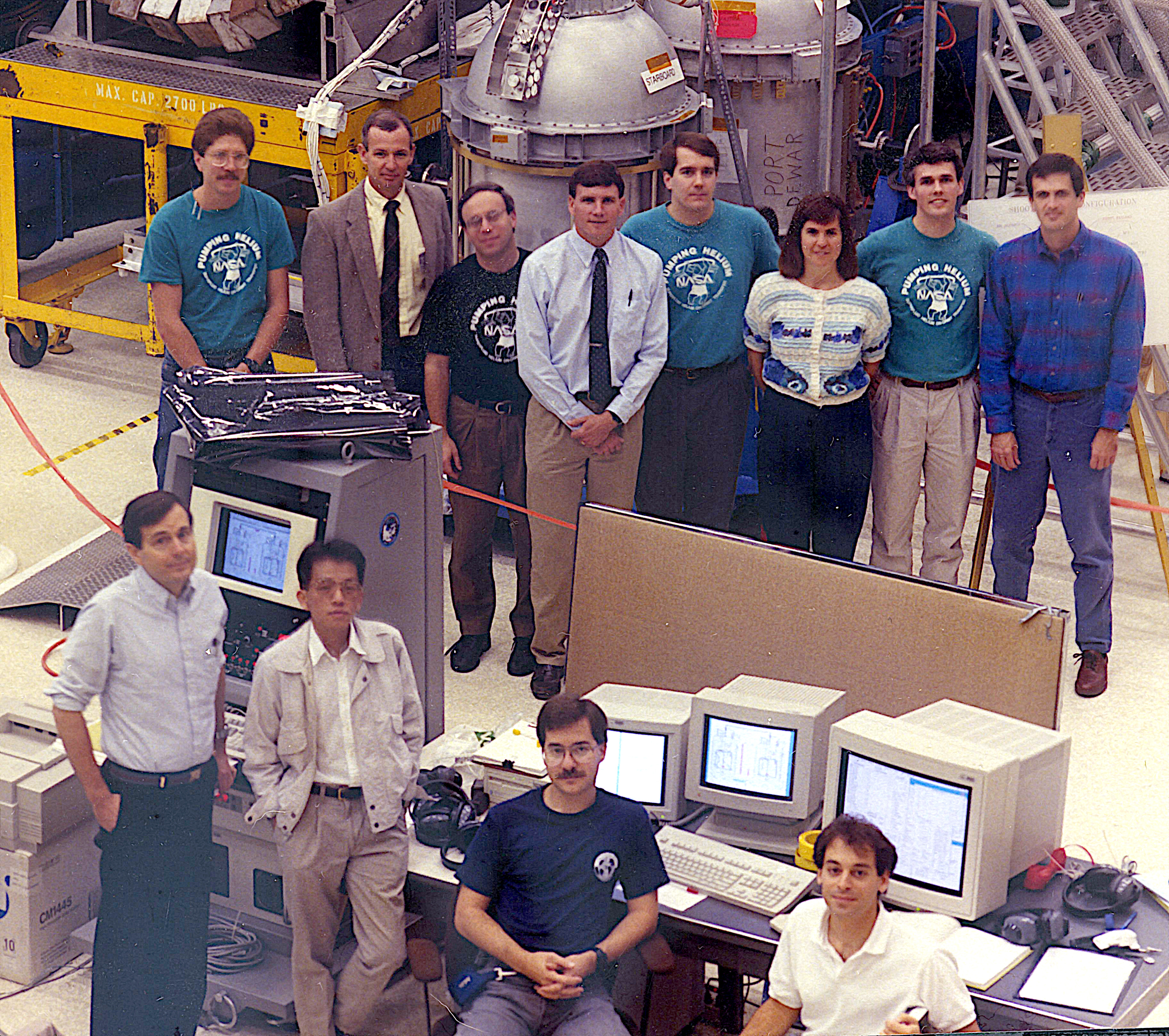 The '80s have been thrust back into our collective conscious! Hits such as Tracy Chapman's "Fast Car" and "Running up that Hill" by Kate Bush have been introduced to a new generation by an incredibly popular cover of the first song and the repetitious use of the second in a recent hit TV series. So, I thought it was appropriate to bring back something spaceflight-related from that decade. The Superfluid Helium on Orbit Transfer flight demonstration, SHOOT, was conceived in 1982 and executed by NASA Goddard Space Flight Center over the remainder of the 1980s.
The '80s have been thrust back into our collective conscious! Hits such as Tracy Chapman's "Fast Car" and "Running up that Hill" by Kate Bush have been introduced to a new generation by an incredibly popular cover of the first song and the repetitious use of the second in a recent hit TV series. So, I thought it was appropriate to bring back something spaceflight-related from that decade. The Superfluid Helium on Orbit Transfer flight demonstration, SHOOT, was conceived in 1982 and executed by NASA Goddard Space Flight Center over the remainder of the 1980s.
Read More
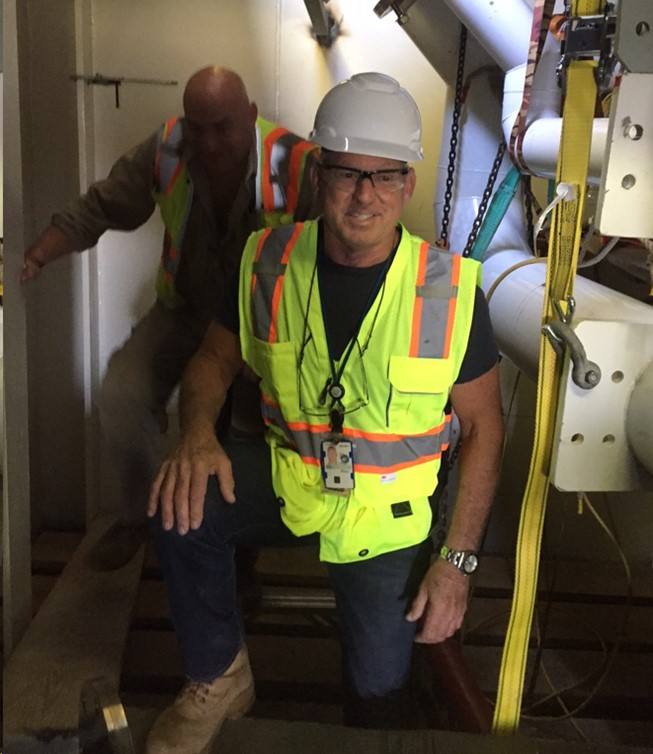 CRYOCO is at the forefront of cryogenic education, training and consulting, boasting a 45-year legacy of providing unparalleled expertise. With a focus on fostering technical prowess across various sectors, from aerospace to medical industries, the company has been instrumental in shaping the landscape of cryogenic applications. Led by David-John Roth, a seasoned cryogenic engineer and subject-matter expert at Kennedy Space Center, CRYOCO offers an array of in-person classroom-style courses tailored to meet the diverse needs of industries worldwide. As Cold Facts celebrates up-and-coming scientists and engineers in our “Young Professionals in Cryogenics and Superconductivity” feature, we sit down with David-John Roth to explore the professional development opportunities CRYOCO offers and discuss the opportunities young professionals bring to the industry.
CRYOCO is at the forefront of cryogenic education, training and consulting, boasting a 45-year legacy of providing unparalleled expertise. With a focus on fostering technical prowess across various sectors, from aerospace to medical industries, the company has been instrumental in shaping the landscape of cryogenic applications. Led by David-John Roth, a seasoned cryogenic engineer and subject-matter expert at Kennedy Space Center, CRYOCO offers an array of in-person classroom-style courses tailored to meet the diverse needs of industries worldwide. As Cold Facts celebrates up-and-coming scientists and engineers in our “Young Professionals in Cryogenics and Superconductivity” feature, we sit down with David-John Roth to explore the professional development opportunities CRYOCO offers and discuss the opportunities young professionals bring to the industry.
Read More
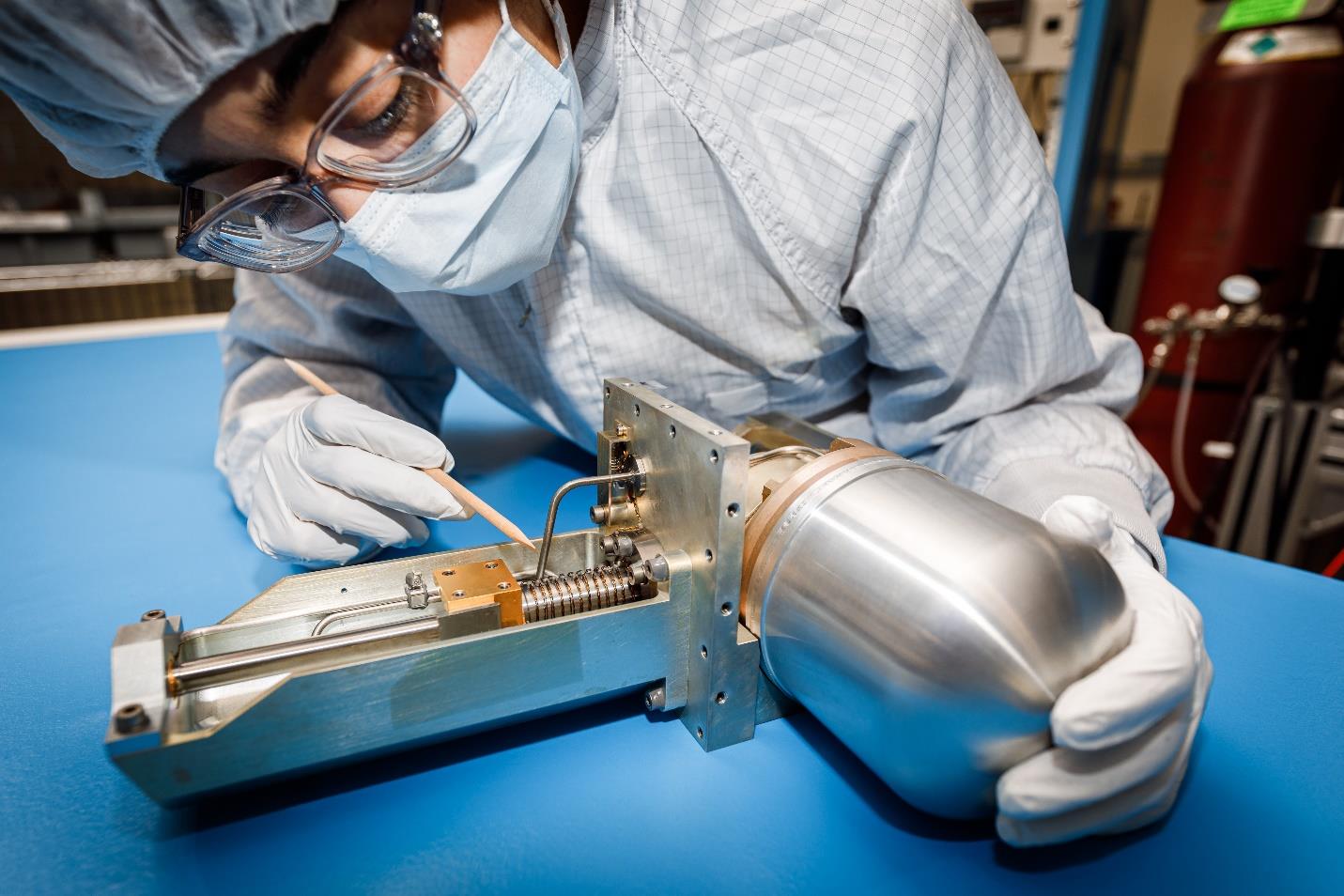 For decades, Northrop Grumman has been making highly dependable cooling systems, cryocoolers, for spacecraft. In spacecraft, a cryocooler is most often essentially a specialized refrigerator deployed on satellites and space telescopes to maintain extremely low temperatures for onboard sensors. This is crucial for capturing high-resolution images of Earth or outer space, like the ones captured by the James Webb Space Telescope. Reliability is key because cryocoolers are part of a symbiotic relationship. If the cryocooler malfunctions, then sensors won’t function. They need each other.
For decades, Northrop Grumman has been making highly dependable cooling systems, cryocoolers, for spacecraft. In spacecraft, a cryocooler is most often essentially a specialized refrigerator deployed on satellites and space telescopes to maintain extremely low temperatures for onboard sensors. This is crucial for capturing high-resolution images of Earth or outer space, like the ones captured by the James Webb Space Telescope. Reliability is key because cryocoolers are part of a symbiotic relationship. If the cryocooler malfunctions, then sensors won’t function. They need each other.
Read More
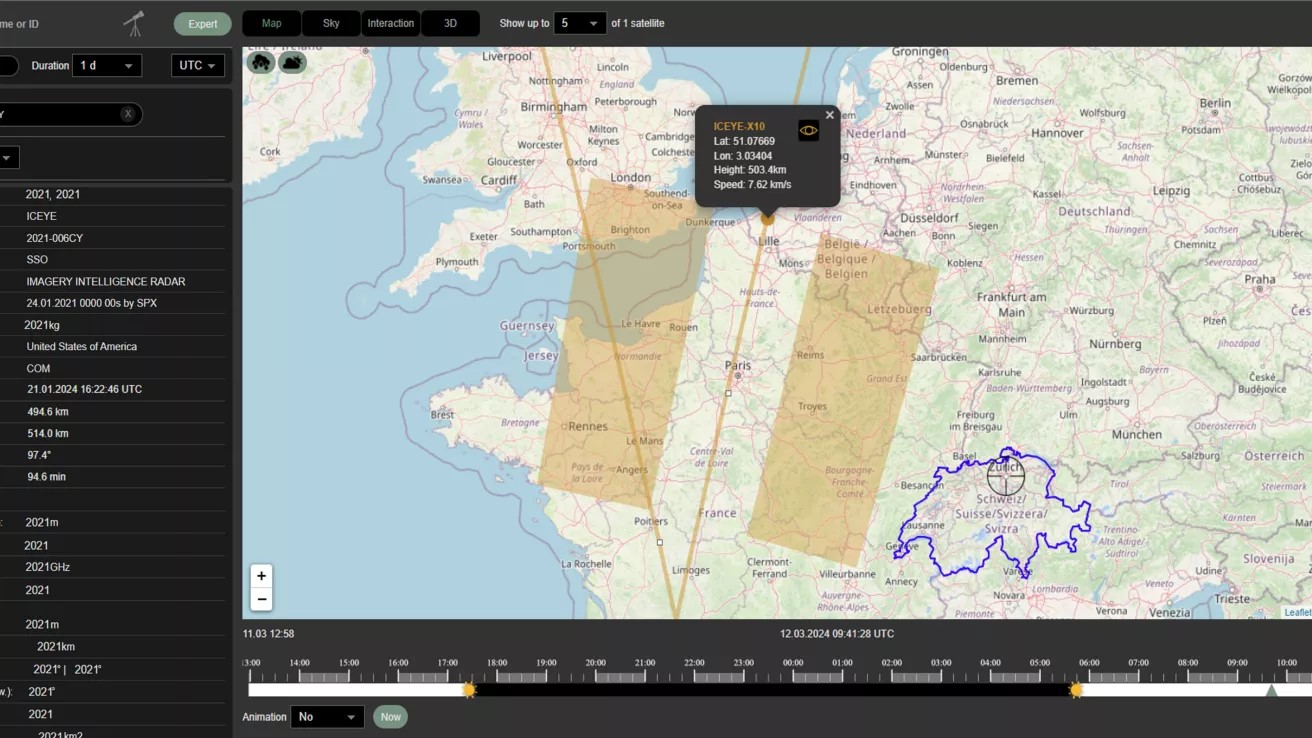 Beyond Gravity, a leading space supplier, expands its expertise into space data services with the launch of its new Space Situational Awareness (SSA) solution. This innovative service, leveraging over six years of data collection, offers unparalleled accuracy and insights into more than 10,000 active satellites, promising to enhance faster decision-making for institutional and commercial customers alike.
Beyond Gravity, a leading space supplier, expands its expertise into space data services with the launch of its new Space Situational Awareness (SSA) solution. This innovative service, leveraging over six years of data collection, offers unparalleled accuracy and insights into more than 10,000 active satellites, promising to enhance faster decision-making for institutional and commercial customers alike.
Read More
 Our friends at the Smithsonian Astrophysical Observatory, in collaboration with other institutions, have published a Request for Information (RFI) for The Black Hole Explorer (BHEX) 4 K Spaceflight Cryocooling System.
Our friends at the Smithsonian Astrophysical Observatory, in collaboration with other institutions, have published a Request for Information (RFI) for The Black Hole Explorer (BHEX) 4 K Spaceflight Cryocooling System.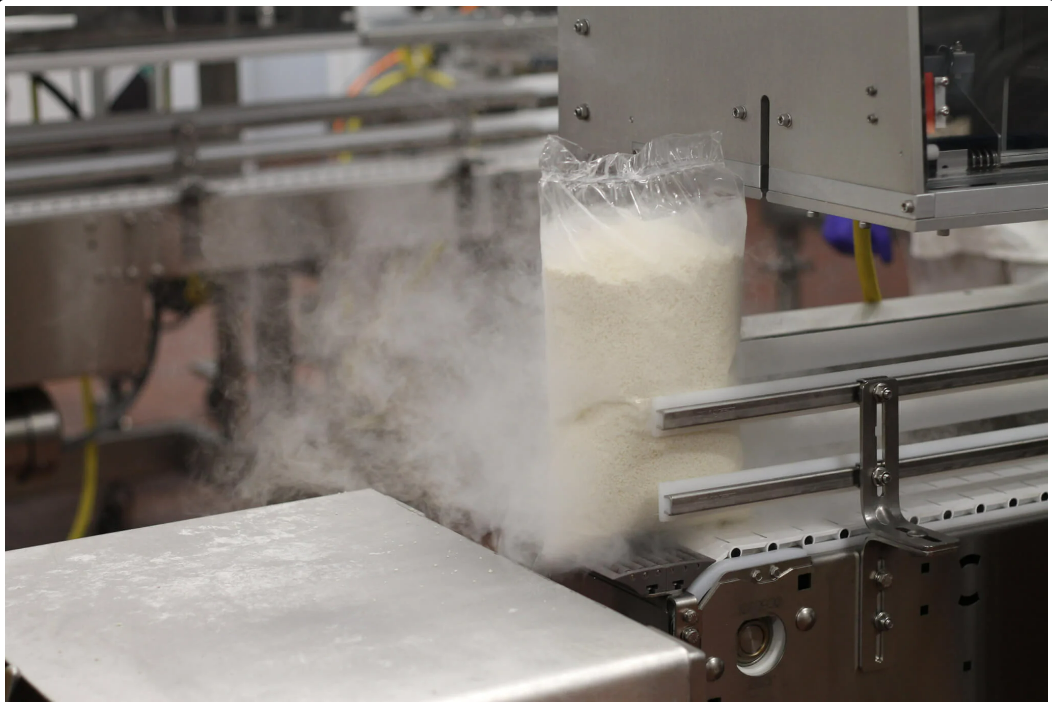 Cryogenic freezing specialist Cryogenic Processors will open a new cryogenic freezing and freeze-drying facility in Paducah, Kentucky, at the end of 2024. The plant will feature three isolated pelletising rooms, each equipped with advanced blending systems and a standard conical pelletiser with an increased capacity of 1000kg per hour. Once pelletized, storage will be available at temperatures as low as -60°C (-76°F).
Cryogenic freezing specialist Cryogenic Processors will open a new cryogenic freezing and freeze-drying facility in Paducah, Kentucky, at the end of 2024. The plant will feature three isolated pelletising rooms, each equipped with advanced blending systems and a standard conical pelletiser with an increased capacity of 1000kg per hour. Once pelletized, storage will be available at temperatures as low as -60°C (-76°F).
Read More
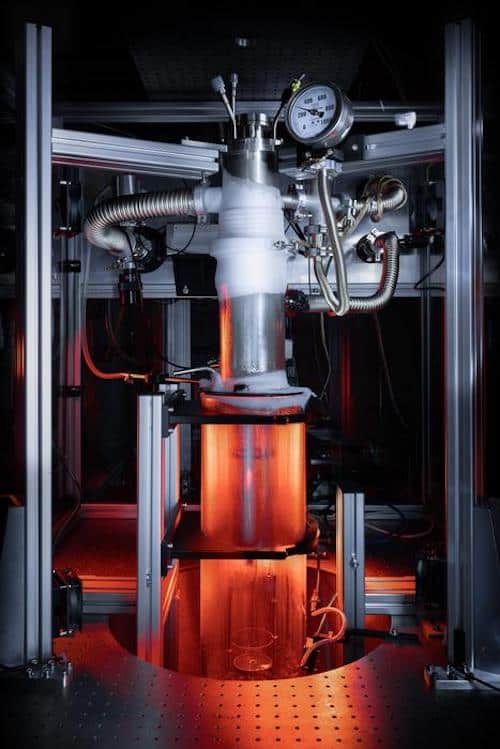 A novel experimental platform known as a giant quantum vortex mimics certain behaviors of black holes, giving scientists an opportunity to observe the physics of these astrophysical structures up close. The vortex appears in superfluid helium cooled to near-absolute zero temperatures, and according to the team that made it, studies of its dynamics could offer hints as to how cosmological black holes produce their characteristic rotating curved space–times.
A novel experimental platform known as a giant quantum vortex mimics certain behaviors of black holes, giving scientists an opportunity to observe the physics of these astrophysical structures up close. The vortex appears in superfluid helium cooled to near-absolute zero temperatures, and according to the team that made it, studies of its dynamics could offer hints as to how cosmological black holes produce their characteristic rotating curved space–times.
Read More
Enhancing Fusion Reactor Control Through Combined Plasma Management Techniques
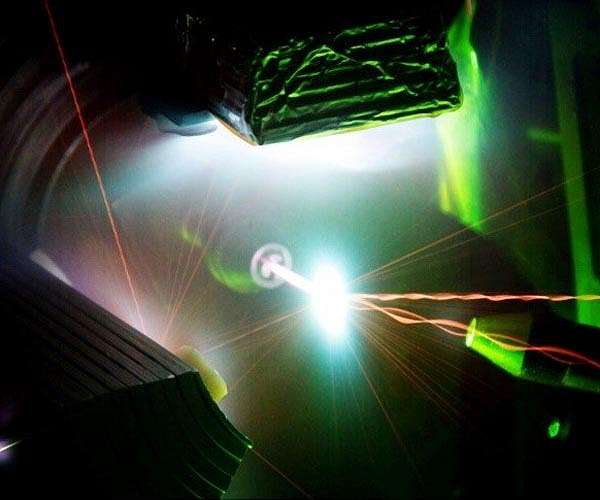 Researchers at the U.S. Department of Energy's Princeton Plasma Physics Laboratory (PPPL) are advancing fusion technology by integrating two established plasma control methods-electron cyclotron current drive (ECCD) and resonant magnetic perturbations (RMP). This combination has shown promising results in improving plasma management, crucial for generating electricity through fusion.
Researchers at the U.S. Department of Energy's Princeton Plasma Physics Laboratory (PPPL) are advancing fusion technology by integrating two established plasma control methods-electron cyclotron current drive (ECCD) and resonant magnetic perturbations (RMP). This combination has shown promising results in improving plasma management, crucial for generating electricity through fusion.
The team's latest simulations, discussed in their recent publication in Nuclear Fusion, mark the first instance where ECCD and RMP have been used together experimentally. "We are exploring new frontiers with this approach, enhancing our control over plasma behavior," commented Qiming Hu, a PPPL staff research physicist and the paper's lead author.



